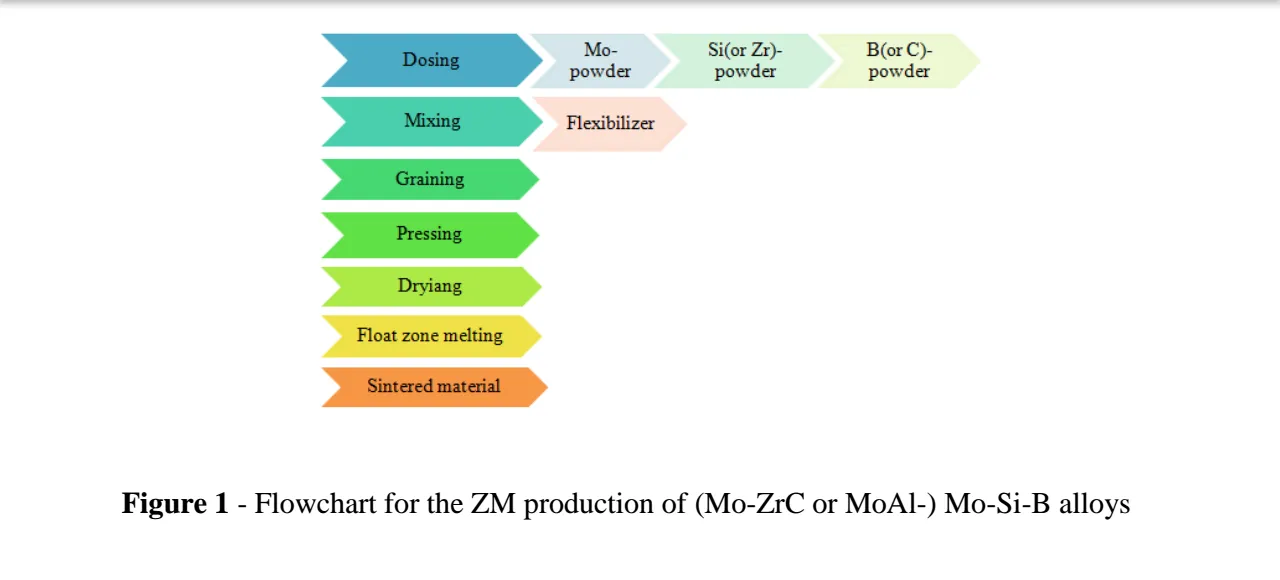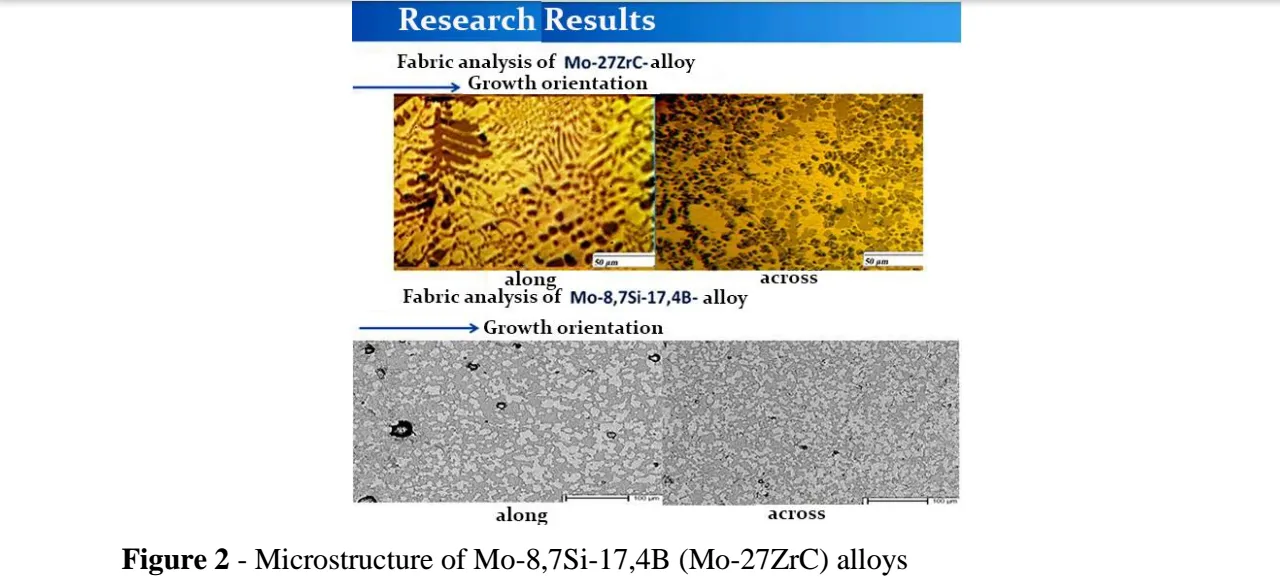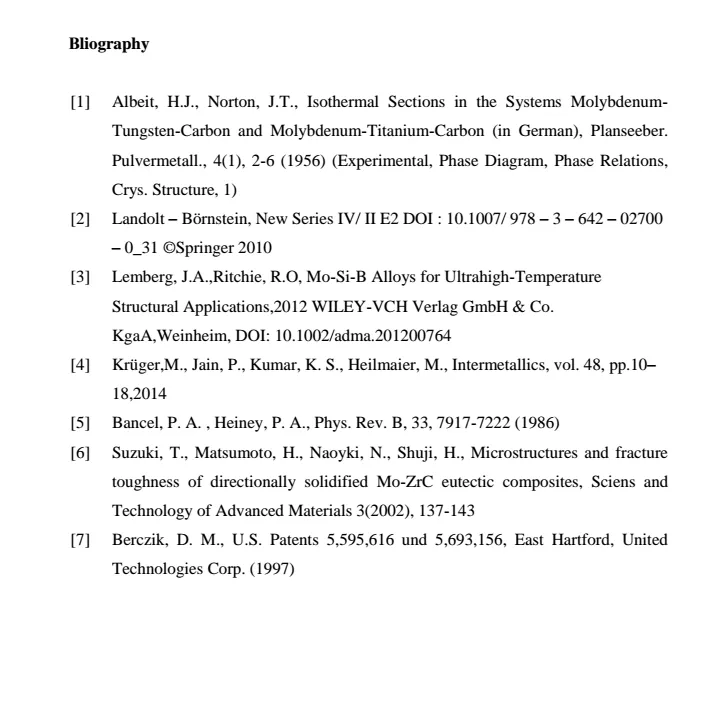Today, there is a great and at the same time increasing demand for structural materials
which could be used at extra-high temperatures above 1100 ° C for space- and energy
engineering. The lack of new high-temperature materials is the inhibitor of rapid
development in the field of turbine construction[1-2]. The use of the nickel-base
superalloys currently used in the high-temperature range of stationary gas and jet
turbines is limited at temperatures up to 1100 ° C under permanent loads.
Mo alloys can successfully replace Ni-based alloys[3] . As a result of the formation of
the MoO3 oxide which is volatile at elevated temperatures, they are usually only
wettable with a coated surface or under a protective atmosphere. However, the oxidation
properties of the Mo alloys can be improved by Si and B[4], Al[5], Zr or C[6] doping
because it results in the formation of intermetallic phases which, by forming the glass
layer, form the alloy surface that is oxygen-protective.
The biggest problem is to produce the alloy cheaply with a fine-grained microstructure.
The easiest way to make an alloy is melt metallurgy. The large difference between the
melting points of molybdenum and the intermetallic phases leads to the formation of
primary Mo mixed crystal islands. An optimal fine-grained structure of the Mo-Si-B
alloy was first produced only in 1997 by Berczik by sputtering the alloy melt[7]. Here,
only helium or hydrogen are suitable, because only these gases can ensure the required
high cooling rate of the powder particles. Therefore, this process is unprofitable due to
high investment costs.
An alternative technology is powder metallurgy process route well known as Zone
Melting (ZM). This process has only recently been applied to the production of Mo-Si-B, Mo-ZrC and Mo-Al alloys, but has already shown a good potential. Figure 1 shows a
flow chart for the preparation of ZM (Mo-ZrC or Mo-Al) Mo-Si-B alloys. The
manufacturing process consists of the preparation of the powders and the subsequent
pressing and zone melting of the Mo-Si-B, Mo-Al and Mo-ZrC rods.

Currently, only the Mo-8,7Si-17,4B and Mo-27ZrC alloys have been studied, whose
microstructural images is shown by Figure 2.

In summary, the Mo-8,7Si-17,4B and Mo-27ZrC alloys were produced using zone
melting. These alloys are eutectic, which allows the fine-grained structure to be created
and to ensure the increase in strength and good oxidation resistance.
Further investigations are scheduled to determine the mechanical properties and
oxidation resistance of the zone-fused Mo-8,7Si-17.4B and Mo-ZrC alloys.

UDK: 621.762.53
Tetiana Hryhorchuck,
Supervisor: I.Bogomol
In collaboration with
V. Bolbut and E. Abdullajeva